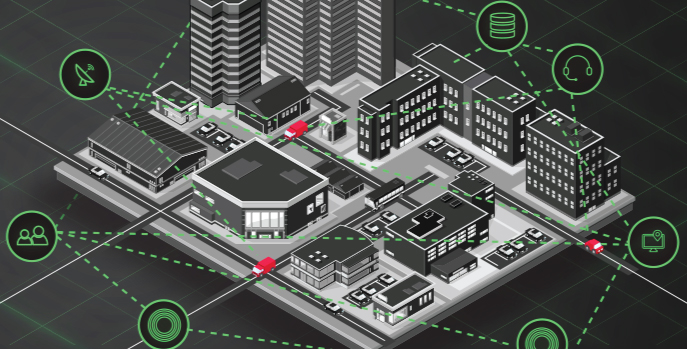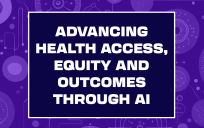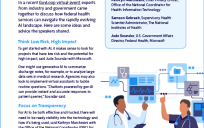What do maps have in common with the Zika virus outbreak and polio in Iraq? At first glance, not much. However, as technologies develop, the power of maps and spatial analytics can build up healthy communities through geographic information systems (GIS) technology, which can use data to map diseases.
To further examine the latest trends in the use of GIS in health and human services, Este Geraghty, Chief Medical Officer & Health Solutions Director at Esri and Jared Shoultz, Geographic Information Systems Technical Specialist Health and Human Services at Esri, joined GovLoop for a recent online training, “Keeping Pace With the Trends in Health and Human Services.”
Geraghty explained that Esri “uses geography as a language that transforms health.” This is why GIS is so compelling in the realm of healthcare: maps communicate and tell the story of the area they depict. These stories engage people, facilitating collaboration at local and global scales. To do utilize GIS most effectively, Geraghty and Shoultz identified five major trends in maps and health and human services.
Outbreaks and Epidemics
The goal with outbreaks and epidemics is to “respond quicker because quick responses are directly linked to the overall health impact linked to these emergencies,” Geraghty explained. As a result, geography is used to see where cases exist or have existed. Then through GIS, practitioners can predict where cases may be in the future and efficient responses can be put in place before the outbreak happens.
A real world example of this can be seen through the Zika virus outbreak. Geraghty said workflows are crucial to containing Zika and other vector-borne diseases. GIS provides a framework and process for designing complete workflows by apply geography to vector-borne diseases at every level. These workflows foster information sharing and facilitate collaboration across organizations. Through this potential problem areas can be mapped out and interacted with, “allowing for spatial analysis to craft a response,” Shoultz explained.
Executive Dashboards
Executive dashboards are useful to utilize new insights tied to the business system. Organizations are complex, with distributed systems that have a constant flow of data that are unable to integrate. Examples of a few systems within an organization can include spreadsheets, images and videos, web services, and social media. Executive dashboards facilitate operations by integrating these separate systems and producing insights that would not be available to either system alone.
ArcGIS, a software-as-a-service hosted by Esri, allows users to make and share maps on the web. The operations dashboard for ArcGIS allows users to monitor, track and assess daily operations. The executive dashboard can include maps, lists, charts and gauges for real-time operations view. Additionally, the dashboard is available for viewing across devices with both internal and public facing interfaces.
Open Data
Open data largely improves collaboration efforts. Shoultz emphasized that, “each user wants the ability to explore and download analysis results and open data has become a means to make this happen.” However, he also brought up that everyone wants to digest data in a different way so barriers must continue to be broken in order to make this happen.
One way this is occurring is through ArcGIS Open Data. Through this, providers are able to share spatial and non-spatial data, create customized sites, and leverage existing investments. On the other hand, consumers can connect freely with data at the source, utilize keyword and geographic searches, consume smart maps, tables and charts, and download or access via application program interfaces.
ArcGIS Open Data is currently being used in a project called the Los Angeles GeoHub. The GeoHub unlocks the city’s geodata, allowing access to the city’s location data, operational efficiency, and stimulating partnerships. This open data partnership allows the city to run more efficiently.
Mobile Data Collection
People are increasingly expecting to be able to do their work efficiently anywhere, on any device, and at any time. As a result, mobile data collection can increase accuracy of data collection at the source. This increases productivity and customer satisfaction while decreasing operating costs, unnecessary labor, and input errors. Additionally, mobile data collection is among the top priorities for agency CIOs, increasing the demand for tech savvy field workers with the training and skills to respond to field service requests.
In practice, field operations uses mobile data collections to plan, coordinate, navigate, capture, and monitor. ArcGIS has a variety of mobile applications available and in beta testing for every step in the field operations process.
Storytelling
Utilizing storytelling can help improve communication and community outreach. Geraghty explained that, “stories can speak to our hearts in a way that quantitative cannot do on its own.” This is critical in changing attitudes and behaviors. Story maps utilize this line of thinking by combining authoritative and interactive maps with narrative texts and multimedia content to tell the story of the location in a compelling way. In order to do this most effectively your story map should connect with your audience, lure people in, be easy to read, and be as simple as possible. You can check out some interesting story maps here, here, and here.
As you can see, some of these concepts are tricky for users and they often get lost in the technical aspects of the process. As a result, “a lot of our focus looking forward is providing even simpler user experiences,” Shoultz explained.






Leave a Reply
You must be logged in to post a comment.